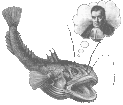UW Aquatic & Fishery Sciences Quantitative Seminar
Sandie O'Neill
Washington Department of Fish and Wildlife
Regional patterns of persistent organic pollutants in five Pacific salmon species ( Oncorhynchus spp ) : variation associated with species-specific and within-species life-history traits.
O'Neill, Sandra M . 1 ; Ylitalo, Gina M. 2 ; and West , James, E . 1 ;
1 Washington Department of Fish and Wildlife, 600 Capitol Way North , Olympia WA 98501-1091
2 NOAA Fisheries, Northwest Fisheries Science Center, 2725 Montlake Blvd. E., Seattle, WA 98112 .
Abstract
Contaminants levels in Pacific salmon and other fishes depend on where they live and what they eat. However, predicting contaminant levels in salmon is particularly difficult because of their complex life histories. Our ongoing monitoring and research studies have documented general accumulation patterns that are tightly linked to the fishes' biology. Although salmon may be exposed to contaminants in freshwater and estuarine habitats, we documented that most persistent organic pollutants are accumulated in marine habitats where most of their growth occurs. Observed contaminant levels in pink, chum and sockeye were lower than chinook and coho, reflecting differences in marine distribution and diet among species. Pink, chum, and sockeye salmon feed and grow primarily in oceanic waters, at great distances from coastal pollution sources, whereas Chinook and coho spend more time in coastal waters along the continental shelf where they may be exposed to coastal pollution sources. We also observed regional variation in contaminant levels in Chinook populations that appears to be associated with differences in their marine distribution. PCBs and PBDEs levels were highest in Chinook salmon that resided in Puget Sound, followed by Puget Sound populations believed to be more ocean-reared, and were lowest in populations distant from urban areas.

